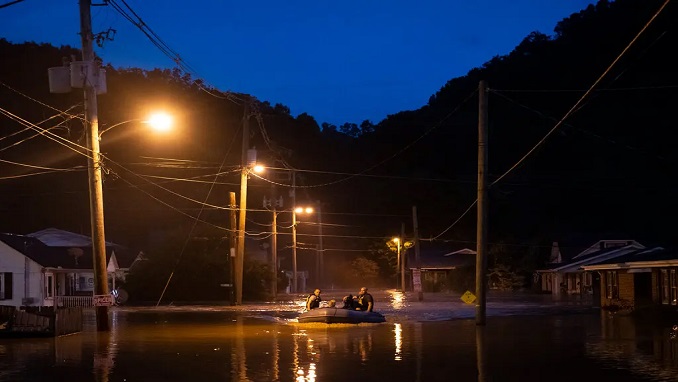
The toll of climate change across the U.S. continues to rise. A new report measures what parts of the country have suffered the greatest number of federally declared disasters. The designation is reserved for only disasters so severe that they overwhelm the ability of state and local officials to respond.
The report found that federally declared disasters have become alarmingly common.
From 2011 to the end of 2021, 90 percent of counties across the U.S. have experienced a flood, hurricane, wildfire, or other natural disasters serious enough for it to be declared a federal disaster.
More than 700 counties suffered five or more federal disasters.
During that same period, 29 states had, on average, at least one federally declared disaster a year somewhere within their borders. Five states have experienced at least 20 disasters since 2011.
The report, published by Rebuild By Design, shows that climate change is here. It comes as the United Nations climate summit COP 27 continues in Egypt.
Countries are clashing over whether they should continue to aim for the 1.5-degree target for limiting rising global average temperatures.
The U.S. and the European Union say any final agreement coming out of this year’s COP should underscore the importance of limiting warming to 1.5 degrees.
But some nations, including China, are resisting efforts to reaffirm the goal. Failing to do so would be a major departure from last year’s climate pact and, to some, a tacit admission of defeat.
Experts warn that the temperature goal is a limit to safe living. Every increase of a tiny fraction of a degree is harmful, and scientists are issuing stark warnings against blowing past the 1.5-degree goal.
At a gathering of the world’s 20 largest economies that is taking place in Bali, Indonesia, this week, leaders said they were resolved “to pursue efforts to limit the temperature increase to 1.5 degrees Celsius,” putting pressure on the diplomats at the climate talks in Egypt.
But with global carbon dioxide emissions reaching a record high this year, some negotiators fear that regardless of what is agreed to on paper, the 1.5-degree goal could soon be out of reach.

Be the first to comment